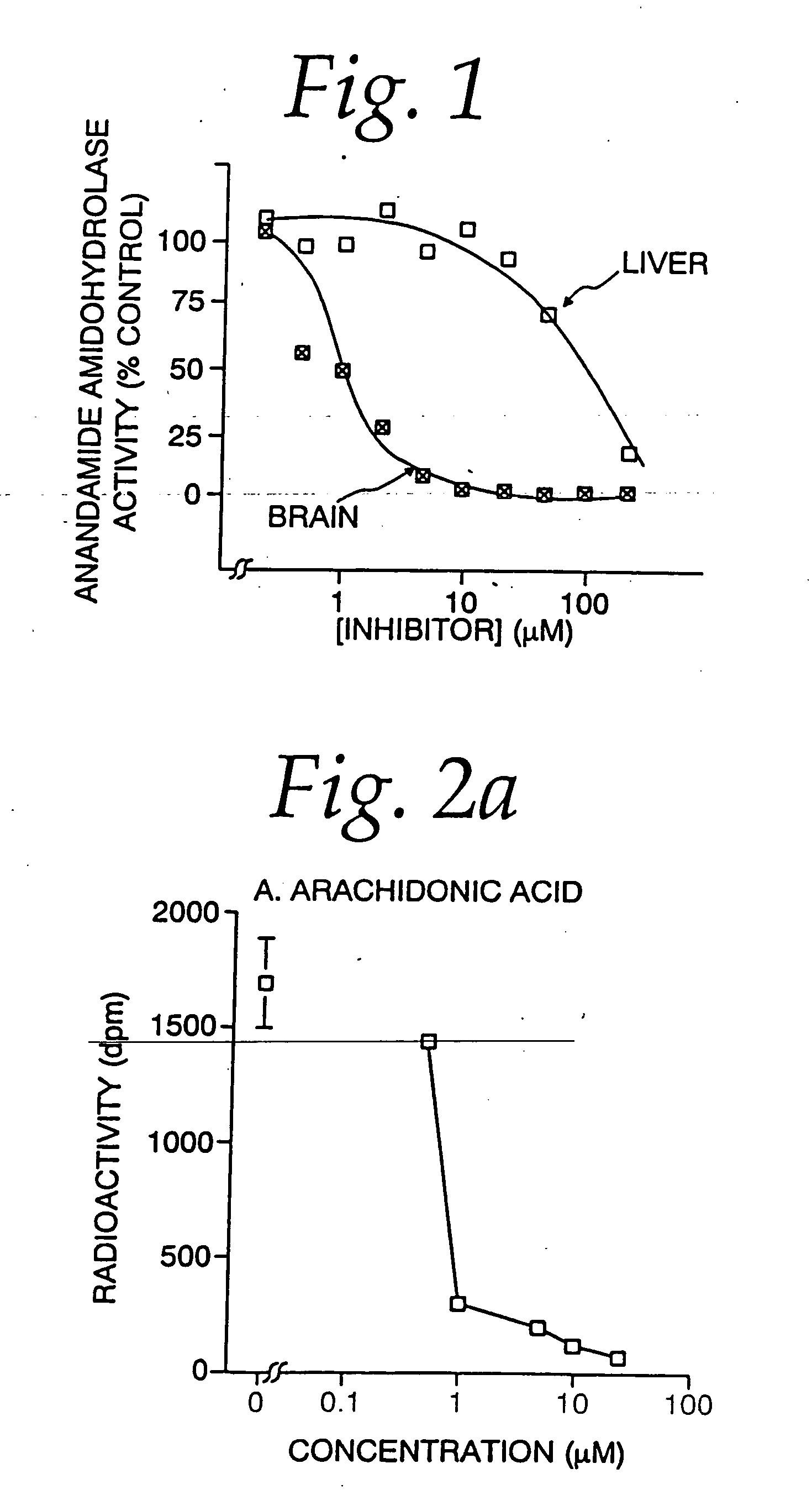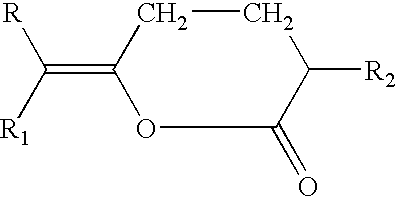Methods of treating mental diseases, inflammation and pain
a mental disease and inflammation technology, applied in the field of mental diseases and compositions, can solve the problems of short-lived anandamide, limited life span, and no potent and selective inhibitors of anandamide amidohydrolase have been identified
- Summary
- Abstract
- Description
- Claims
- Application Information
AI Technical Summary
Benefits of technology
Problems solved by technology
Method used
Image
Examples
example 1
Anandamide Amidohydrolase Assay
[0017] An assay was developed which demonstrated inhibition of rat brain anandamide amidohydrolase by E-6-(bromomethylene) tetrahydro-3-(1-naphthalenyl)-2H-pyrane-2-one. This assay consisted of determining the amount of radiolabeled arachidonic acid liberated from radiolabeled anandamide by rat brain anandamide amidohydrolase in the presence of various concentrations of E-6-(bromomethylene)tetrahydro-3-(1-naphthalenyl)-2H-pyrane-2-one. This assay was also used to show that E-6-(bromomethylene)tetrahydro-3-(1-naphthalenyl)-2H-pyrane-2-one is more effective on brain tissue anandamide amidohydrolase activity, by examining its effect on rat liver anandamide amidohydrolase.
[0018] Anandamide amidohydrolase was measured in rat brain or rat liver microsome fractions. The fractions (0.1 mg of protein) were prepared following the protocols of Desarnaud et al., J. Biol. Chem. 270, 6030-6035 (1995), and were incubated in 50 mM Tris-Cl (pH 7.4) at 37° C., in the ...
example 2
Assay in Cultures of Cortical Astrocytes
[0022] An additional assay demonstrated inhibition of anandamide amidohydrolase in intact neural cells. This assay consisted of determining the amount of radiolabeled arachidonic acid produced, when cultures of rat cortical astrocytes were incubated in the presence of radiolabeled anandamide.
[0023] Cultures of rat cortical astrocytes, essentially free of neurons, were prepared following the standard procedures described in Cadas et al., J. Neurosci. 16, 3934-3942 (1996), and used after 3 weeks in culture. The cultures were incubated in Krebs Tris solution (pH 7.4) at 37° C., in the presence of radiolabeled anandamide plus various concentrations of E-6-(bromomethylene)tetrahydro-3-(1-naphthalenyl)-2H-pyrane-2-one (0.1-100 μM). After 20 min. of incubation, the reactions were stopped with cold methanol, and the cells were scraped from the culture dishes and subjected to chloroform extraction. The organic phases were dried, and analyzed as follo...
PUM
| Property | Measurement | Unit |
|---|---|---|
| pH | aaaaa | aaaaa |
| concentrations | aaaaa | aaaaa |
| liquid scintillation counting | aaaaa | aaaaa |
Abstract
Description
Claims
Application Information
 Login to View More
Login to View More - R&D
- Intellectual Property
- Life Sciences
- Materials
- Tech Scout
- Unparalleled Data Quality
- Higher Quality Content
- 60% Fewer Hallucinations
Browse by: Latest US Patents, China's latest patents, Technical Efficacy Thesaurus, Application Domain, Technology Topic, Popular Technical Reports.
© 2025 PatSnap. All rights reserved.Legal|Privacy policy|Modern Slavery Act Transparency Statement|Sitemap|About US| Contact US: help@patsnap.com



